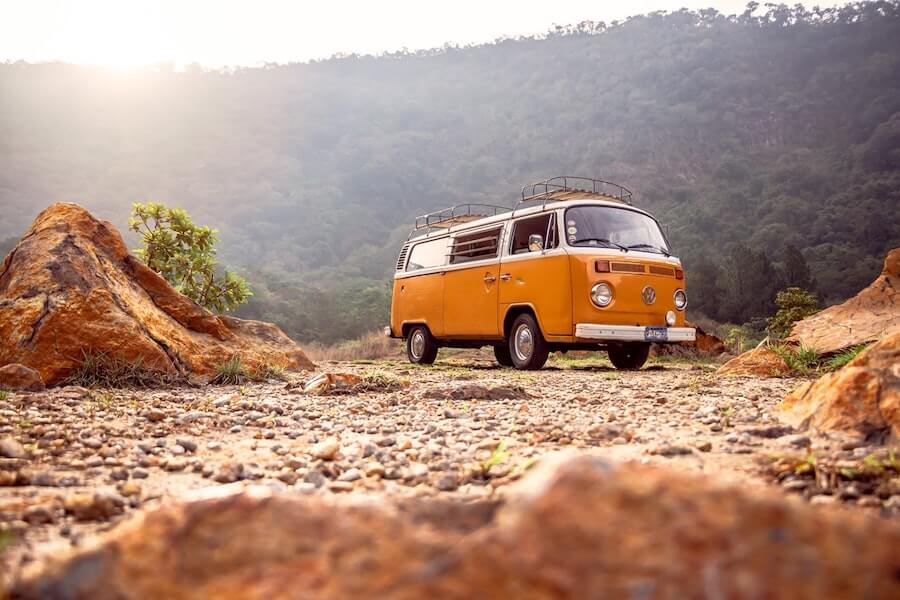Going for an adventure with a van, bus or RV, particularly with self-sufficient power is a highly rewarding experience. You can make it more affordable with an efficient solar kit. Solar camper kits seem to be a little confusing to some, but we will guide you on the basics of a system. The size and rating of all the components need to be well researched to save on the cost of the system.
Let’s look at the essentials for self-sufficient camping. We need solar panels, batteries to store the solar energy, a battery charger and an inverter to power up your fridge, lights, laptops, mobile phones and other things you wish to take with you (like a small blender). Cable sizing and mounting of the solar panels must be set up properly and securely. Waterproof instalment and cable ducts are very important to avoid any problems related to human interference.
To fully utilise the power of a solar system you need at least 500W of power. To achieve this output you can go with two 250W panels to achieve a total of 500W. I have a small bus with two 285W panels and it creates more than enough power for me. Some recommend having at least 1500W of power, but this would be dependent on the size of your vehicle and how much power you use. Place them on the RV roof with well bolted frames. To avoid any water leakage use silicone gel at the joints. The panels are connected together with MC4 connectors.
After wiring connections of solar panels, you have to connect the junction box with charge controller/regulator. A solar regulator (or charge controller) works in conjunction with a stand alone (off grid) system. A solar regulator is a small box consisting of solid state circuitry that is placed between a solar panel and a battery. Its function is to regulate the amount of charge coming from the panel that flows into the battery bank in order to avoid the batteries being overcharged. A regulator can also provide a direct connection to appliances, while continuing to recharge the battery. That is, you can run appliances directly from it, bypassing the battery bank; but the batteries will continue to be charge. The final function of modern solar charge controllers is preventing reverse-current flow. You’ve worked hard all day using solar power to charge the batteries; you don’t want to waste all that power! The charge controller can detect when no energy is coming from the solar panels and open the circuit, disconnecting the solar panels from the batteries and stopping reverse current flow. The charge controllers are of two types. MPPT (Maximum Power Point Tracking) and PWM (Pulse Width Modulation). We suggest you to go for MPPT controller as it tracks the maximum power point at current hour to the day and makes sure to transfer maximum power to batteries. I have a 30Amp solar smart regulator in my bus.
The charge controller connects the PV system to batteries. The batteries recommended for normal storage are 120Ah deep cycle batteries. I have two 120Ah deep cycle batteries for my bus. Deep cycle batteries are suitable due to their large number of charging cycles so they last longer than SLI (lead-acid) batteries. Generally, two batteries of 12V each are enough to get you throughout the 24hrs of usage.
After battery connection, you have to connect the inverter. There are two types of inverters available for solar systems. Grid-Tie and Off-Grid Inverters. The one recommended for camper life is Off-Grid. The complete load will be connected to the inverter running the power from batteries, therefore the size of the inverter matters a lot. Going for a higher rating will be expensive considering the items connected with inverter. The suitable size for this setup is between 1000VA to 1200VA (between 600W to 1200W). The inverter in my bus is 1500W. This allows for charging and usage of all my necessary items like my laptop (60W+ required), phone (5W required), fan (55-100W required) and small blender (900W required).
An additional safety mechanism to protect the charge controller, your batteries and appliances, plus reduce fire risk, is placing an appropriately rated fuse between the solar panel and the regulator. Once this is all set up, you are ready to get off road, explore and continue to enjoy the benefits of living life with power.

